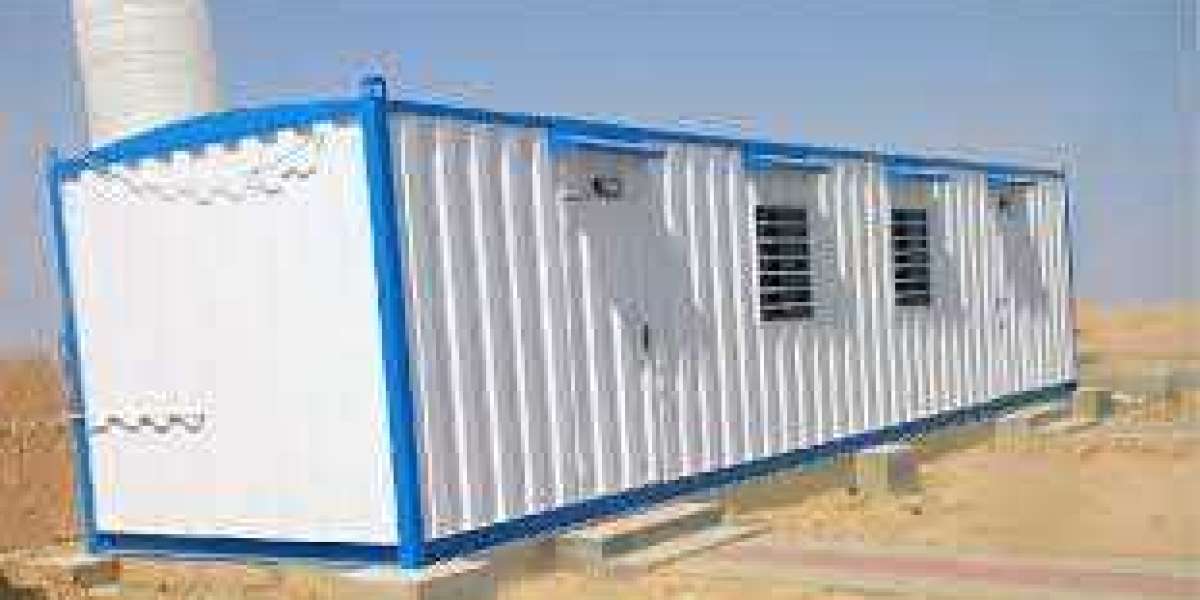Ensuring proper ventilation in an office container is crucial for maintaining a comfortable and healthy indoor environment. Poor ventilation can lead to a buildup of indoor pollutants, stale air, and discomfort for occupants. In this article, we explore creative ways to enhance ventilation in your office container to promote productivity, well-being, and efficiency.
Understanding the Importance of Ventilation
Proper ventilation in an office container serves several essential functions:
- Air Quality: Ventilation helps remove indoor pollutants such as volatile organic compounds (VOCs), carbon dioxide (CO2), and airborne contaminants, ensuring a healthier indoor environment.
- Comfort: Adequate ventilation helps regulate temperature and humidity levels, preventing the buildup of heat and moisture that can cause discomfort for occupants.
- Productivity: Good indoor air quality and thermal comfort contribute to higher productivity levels among employees, reducing absenteeism and improving overall performance.
Factors Affecting Ventilation
Several factors influence the ventilation requirements and capabilities of an office container:
- Container Size: The size and layout of the container determine the available space for ventilation openings and airflow distribution.
- Occupancy: The number of occupants in the container affects the rate of indoor air pollution and the need for fresh air supply.
- Location: Environmental factors such as climate, air pollution levels, and proximity to sources of contamination can impact ventilation effectiveness.
- Regulatory Standards: Building codes and regulations may specify minimum ventilation rates and requirements for indoor air quality in commercial buildings, including office containers.
Creative Ventilation Solutions
1. Natural Ventilation
Maximize natural ventilation by strategically placing windows, doors, and vents to facilitate the flow of fresh air throughout the container. Orienting the container to capture prevailing winds and incorporating adjustable openings can enhance airflow and cross-ventilation. Louvered windows, roof vents, and operable skylights allow for passive cooling and ventilation without relying on mechanical systems.
2. Mechanical Ventilation Systems
Install mechanical ventilation systems, such as exhaust fans, supply fans, or air handling units, to supplement natural ventilation and ensure consistent airflow. These systems can be integrated with heating, ventilation, and air conditioning (HVAC) systems to regulate indoor air quality and temperature effectively. Consider energy-efficient options with programmable controls and air filtration capabilities to optimize ventilation performance while minimizing energy consumption.
3. Ventilation Accessories
Enhance ventilation efficiency with accessories such as air vents, grilles, and ductwork to distribute airflow evenly throughout the container. Adjustable air vents allow occupants to customize airflow rates and direction based on comfort preferences and occupancy levels. Incorporating insect screens and weatherproof louvers helps prevent pests, debris, and inclement weather from impeding ventilation.
4. Passive Cooling Strategies
Implement passive cooling strategies to reduce the need for mechanical ventilation and minimize energy costs. Strategies such as shading devices, reflective roof coatings, and thermal insulation can help mitigate heat gain and maintain comfortable indoor temperatures. Design features such as insulated wall panels, low-emissivity windows, and natural ventilation chimneys optimize thermal comfort while reducing reliance on mechanical cooling systems.
Frequently Asked Questions (FAQs)
Q1: How can I improve ventilation in my office container without compromising security?
A1: You can enhance ventilation while maintaining security by installing louvered windows with security grilles, using tamper-resistant vent covers, and incorporating security screens on doors and windows.
Q2: Are there regulations or standards for ventilation in office containers?
A2: Yes, building codes and standards specify minimum ventilation requirements for commercial buildings, including office containers. Compliance with these regulations ensures adequate indoor air quality and occupant comfort.
Q3: What are the benefits of incorporating natural ventilation into my office container?
A3: Natural ventilation reduces energy consumption, enhances indoor air quality, and promotes occupant comfort and well-being. It also provides a connection to the outdoors, improving overall satisfaction and productivity among occupants.
Q4: How often should I inspect and maintain ventilation systems in my office container?
A4: Regular inspection and maintenance of ventilation systems are essential to ensure optimal performance and longevity. Inspect filters, ductwork, fans, and controls periodically, and address any issues promptly to prevent downtime and maintain indoor air quality.
Conclusion
Proper ventilation is essential for creating a healthy, comfortable, and productive work environment in an office container. By incorporating creative ventilation solutions such as natural ventilation, mechanical ventilation systems, ventilation accessories, and passive cooling strategies, you can optimize indoor air quality, thermal comfort, and energy efficiency. Prioritize ventilation design and implementation to enhance occupant well-being and satisfaction while meeting regulatory requirements and sustainability goals.







